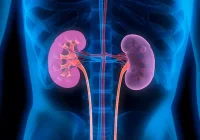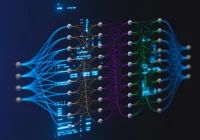Prostate cancer remains a major global burden, while diagnostic pathways continue to evolve to balance accuracy, invasiveness and resource use. Multiparametric MRI is central to noninvasive assessment but can be affected by motion, interpretation variability and scan duration. Researchers have reported an in silico evaluation of MRI histopathology, a noninvasive approach that trades spatial coherence for markedly higher effective resolution by acquiring spectral signatures of tissue texture rather than conventional images. Using simulated measurements derived from digitised histology, they developed deep learning models to classify local regions as cancerous or normal, explored feature selection to streamline data acquisition and tested whether incorporating spatial context improves performance and supports lesion size estimation.
Submillimetre Texture Measurements and Simulated Dataset
MRI histopathology focuses on the spatial frequency content of tissue, acquiring spectra that reflect microscopic texture at scales finer than traditional MRI. By exciting a three-dimensional volume and encoding a limited set of spatial frequencies, it captures signals resilient to patient motion because spins move with tissue, removing the need for spatial coherence that standard imaging requires. The method aims to bridge the gap between noninvasive MRI and invasive histopathology by sampling texture at less than 50 µm, far below the typical in-plane resolution thresholds used in clinical prostate MRI.
Must Read: [18F]CTT1057 Improves Prostate Cancer Detection
To evaluate diagnostic potential preclinically, researchers simulated MRI histopathology measurements on a public set of 114 haematoxylin-eosin slides from 16 radical prostatectomy specimens containing prostate cancer. The process generated more than half a million one-dimensional spectra from millimetre-scale regions of interest, with around 80 000 labelled positive. Training and test sets were split by subject to maintain independence. Rather than learning from images, models were trained directly on spectral intensities at selected spatial frequencies, aligning with what a clinical acquisition would yield. This approach allowed large sample counts at the local level despite the small number of prostates, while acknowledging that scarcity of this modality’s datasets remains a constraint.
The modelling task was binary classification of individual regions as normal or cancerous. Fully connected neural networks were found to be the most suitable architecture for spectral inputs. The researchers also generated whole-organ inference maps from the in silico spectra to illustrate model behaviour, while noting that clinical sampling may be sparser and would not necessarily reproduce such detailed maps in practice.
Feature Selection and Classification Performance
A key objective was to identify a compact set of spatial frequencies that preserves discriminative power while limiting clinical acquisition time. Spectra were initially sampled at 39 wavelengths from 0.05 mm to 1 mm. Multiple feature sets were compared, including four bands of 10 wavelengths each covering short to long ranges and a set of 10 wavelengths evenly spanning the full spectrum. A joint parameter–hyperparameter sweep with fivefold cross-validation evaluated architectures and features. Using all 39 wavelengths provided an upper bound with an area under the receiver operating characteristic curve of 0.79, while the evenly spaced 10-wavelength set achieved 0.78. Models trained on long wavelengths alone performed slightly worse, and those restricted to short or intermediate bands performed worst. The results indicate that evenly sampling the full spectrum with a clinically feasible number of frequencies retains most of the available information.
The best performing network for 10 wavelengths employed stacked hidden layers with batch normalisation and dropout. At the F1-optimised threshold, cross-validated test performance reached 82% accuracy, with 44% precision and 52% recall. Additional sweeps using even fewer wavelengths showed only small declines, suggesting that as few as six textural features can still be highly informative for classification. These findings provide practical guidance for configuring acquisitions that are time efficient without unduly sacrificing performance.
Spatial Context and Lesion Size Estimation
Cancer tends to form contiguous regions larger than a single sampling voxel, so the team investigated whether incorporating neighbouring measurements could improve robustness. They aggregated inputs along rod-shaped arrangements that mirror how MRI histopathology excites and encodes tissue, then stacked a random forest on top of neural network outputs to combine predictions across neighbours. As the number of neighbours increased, predictions became more confident and less noisy, with an AUC that rose to a peak when using around 15 neighbours on each side before declining as excessive context washed out small lesions. On a representative test, integrating spatial context improved classification performance to an AUC of 0.84 and sharpened delineation of tumour boundaries.
The same framework supported preclinical estimation of lesion size. By scanning a subarray containing a suspected tumour with rods of varying input sizes and perturbing the classification threshold around the F1-optimal value, the researchers generated ensembles of predictions that emphasised either precision or recall. Kernel density estimation on these ensembles produced smooth size distributions with confidence intervals. Examples for both small and large lesions showed qualitative agreement between predicted width distributions and reference labels, with intervals that captured the observed spread. The approach accommodates scenarios where clinical sampling may be limited to a few rods, with threshold perturbation providing dispersion that reflects uncertainty.
The in silico evaluation demonstrates that MRI histopathology can provide discriminative, submillimetre-scale textural information for prostate cancer detection and parameter selection for future clinical acquisitions. Evenly sampling about 10 wavelengths across the spectrum preserved most predictive power compared with a 39-wavelength upper bound, and incorporating spatial context increased performance to an AUC of 0.84 while enabling lesion size estimation with confidence bounds. The analysis is limited by the absence of external validation against histology or multiparametric MRI, the small number of prostates and dependence on simulated measurements. Further in vivo studies across broader cohorts are needed to refine acquisition parameters, improve generalisability and assess how MRI histopathology could complement multiparametric MRI to target biopsies more accurately and support monitoring within the diagnostic pathway.
Source: Radiology: Imaging Cancer
Image Credit: iStock










